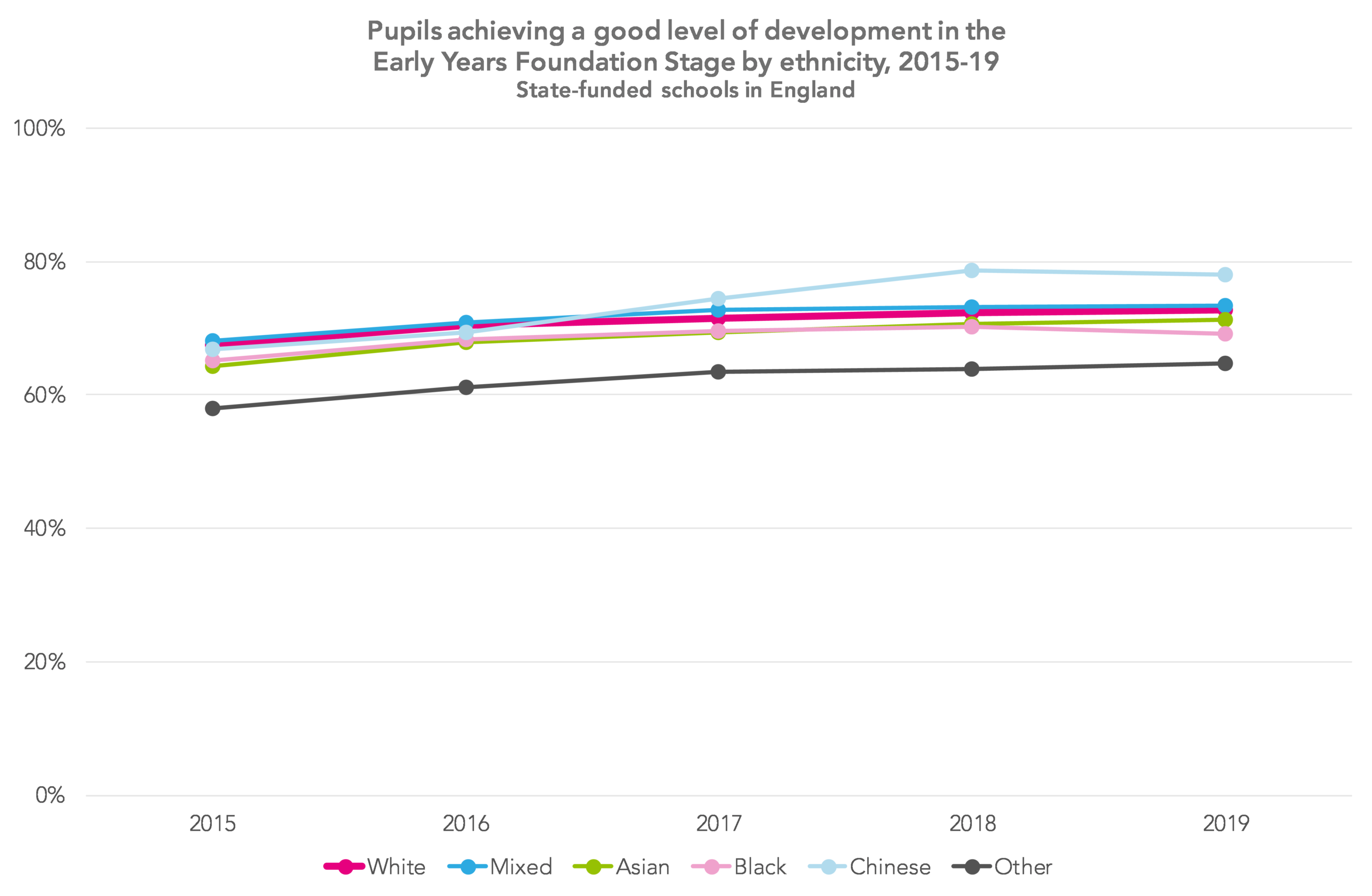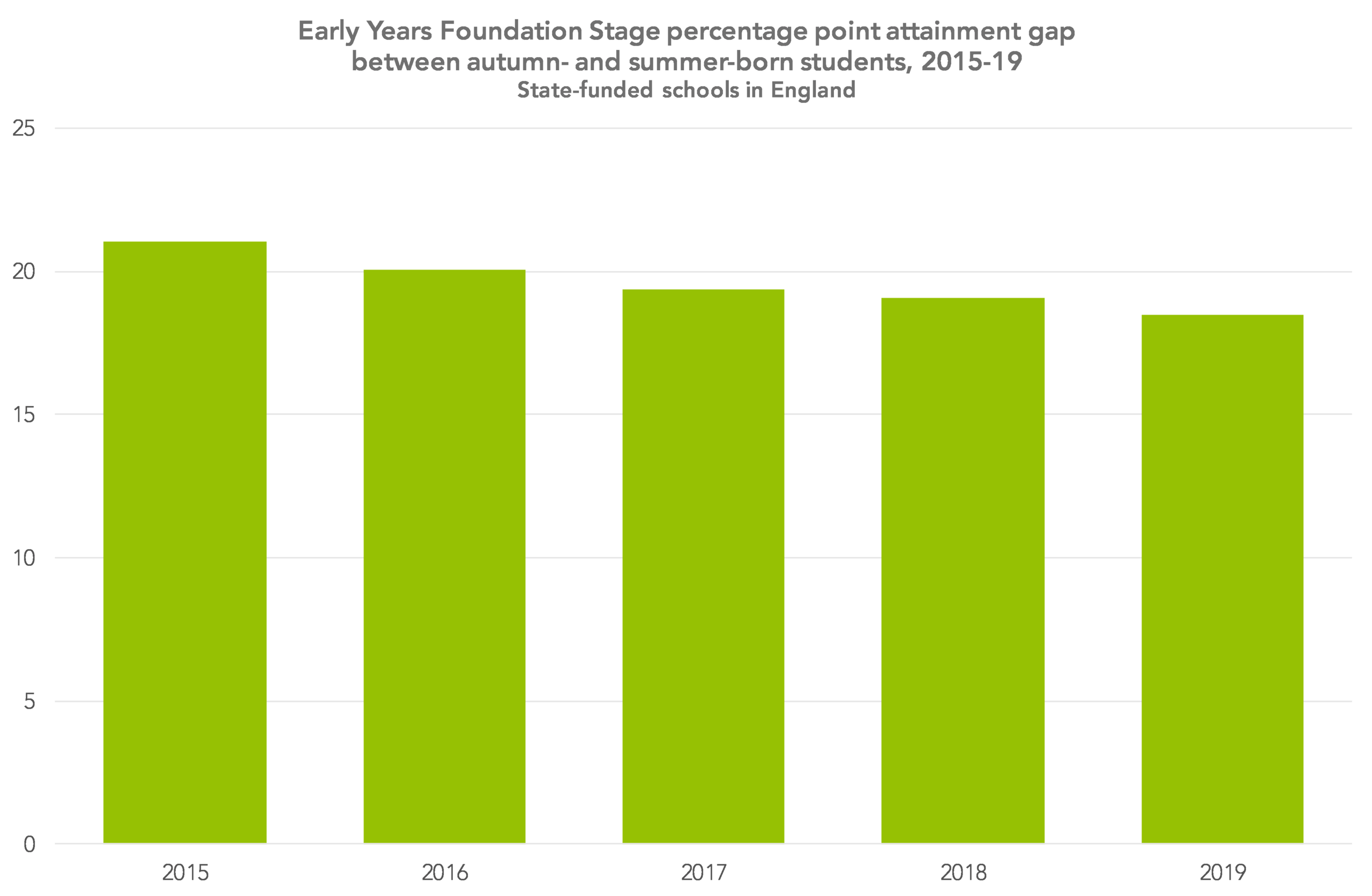Yesterday the government released new data showing how attainment in the Early Years Foundation Stage breaks down by pupil characteristics.
We already know from the original release in October that more pupils than ever are achieving a good level of development, but that gender gaps persist. Here’s our rundown of the most interesting things that the new data tells us.
1. The disadvantage gap remains, especially in literacy and maths
Only 56.5% of pupils eligible for free school meals achieved a good level of development, compared to 74.3% of all other pupils.
For the second year in a row, this gap has increased slightly, up to 17.8 percentage points from 17.0 in 2017. As we’ve written previously, the gap at this early stage is an important contributor to attainment gaps in later years.
Looking at the individual early learning goals, FSM-eligible pupils are less likely to reach at least the expected standard than other pupils in every goal. The difference was highest for reading and writing, with the maths goals close behind.
The gap has increased slightly since 2018 for every goal except technology. Technology is also the goal with the smallest difference: just 5.8 percentage points in 2019.
Having said all that, in recent years there has been a general fall in the percentage of pupils eligible for free school meals, which has particularly affected primary schools since the introduction of universal infant free school meals in 2014.
These changes mean that we can’t be confident that eligibility for free school meals is a consistent indicator of disadvantage over time.
2. Differences by ethnicity aren’t going away
The proportion of pupils reaching a good level of development continues to vary by ethnicity.
The picture this year was similar to that in 2018; Chinese pupils were most likely to reach a good level of development (78.1%), and pupils from an ethnic background categorised as other were least likely to (64.7%). There was an attainment gap for black and Asian pupils and pupils from other ethnic backgrounds in every single early learning goal.
While, overall, pupils’ performance has increased slightly since 2018, it has fallen for both black and Chinese pupils, by 0.9 and 0.5 percentage points respectively.
3. Autumn-born pupils have less of an edge
Month-of-birth still matters, but the gap between autumn- and summer-born children is narrowing every year, as the chart below shows.
In 2019 the gap stood at 18.5 percentage points, down from 21.0 in 2015. This isn’t actually a surprise; we would expect this gap to narrow as overall attainment improves.
4. There are more SEN pupils this year
The number of pupils with special education needs (SEN) increased for the second year running, from 60,135 in 2017 to 61,237 in 2019. And this was at a time when the total number of pupils decreased .
There has also been an increase in the proportion of SEN pupils with an education, health and care plan (EHCP) or statement. In 2017, this group made up 15.4% of all SEN pupils, but this increased to 17.5% in 2019.

Want to stay up-to-date with the latest research from FFT Education Datalab? Sign up to Datalab’s mailing list to get notifications about new blogposts, or to receive the team’s half-termly newsletter.











No comment on the gender gap?
Hi, thanks for your comment. This latest release doesn’t give us any new info on the gender gap, which is the only reason I didn’t mention it here. The original release covered it in some detail – it is slightly down by 0.8 percentage points from 2018 but is still a hefty gap.